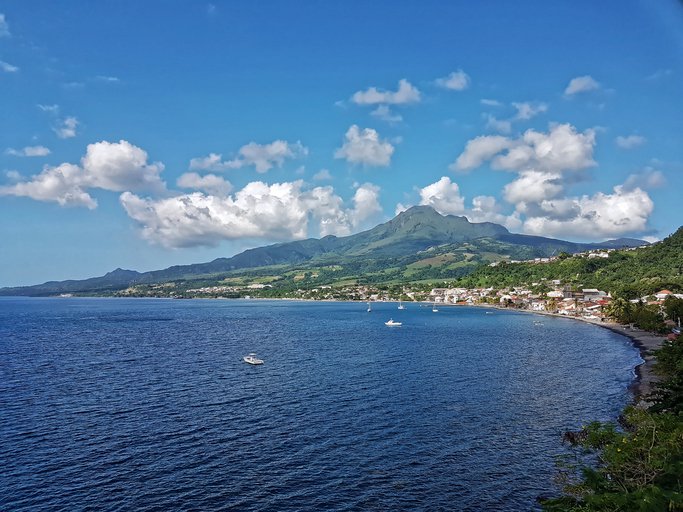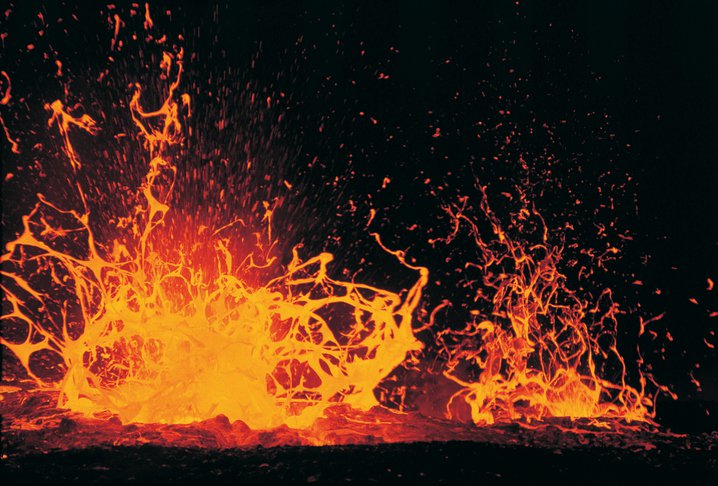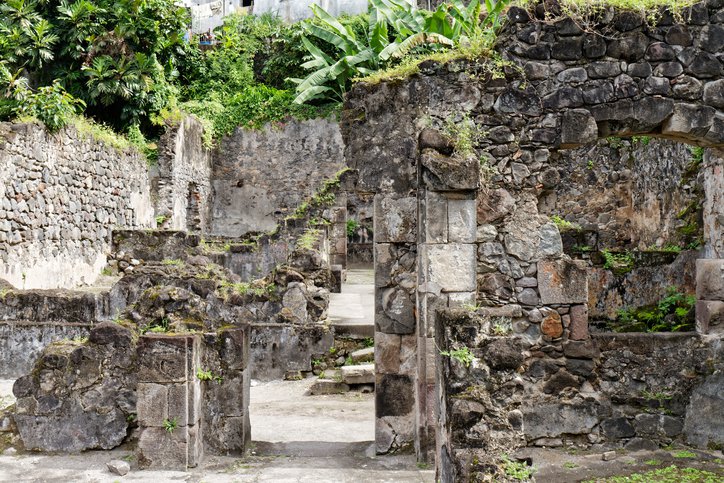Volcano: Mt. Pelee
Mt. Pelee is a stratovolcano on the northern end of the Caribbean island of Martinique. Its claim to fame, if you will, was the violent eruption of 1902 which killed nearly 30,000 people and destroyed the nearby city of St. Pierre, considered at the time to be the “Paris of the Caribbean.”
In April 1902, small tremors rattled St. Pierre and clouds of sulfur dioxide wafted down the mountain. Odd things began to happen, such as the rupture of an underwater telegraph cable and a lake mysteriously appearing in the caldera.

Image credit: Getty Images
On May 2, a fiery eruption spewed glowing hot rocks and ash into the nighttime sky. Birds fell out of the air and dead fish washed up on the shore, possibly killed by an underwater shockwave. The Riviere Blanche fluctuated wildly from overflowing its banks to disappearing completely. Alarmed by the strange happenings, people from the surrounding countryside flocked to St. Pierre in search of shelter.
On May 5, a massive lahar (violent mudflow containing volcanic material) careened down the mountainside at speeds approaching 60 mph. The mud and volcanic material destroyed a sugar processing plant on the coast, killing almost two dozen people. When the debris spilled into the ocean, it caused a massive tsunami almost ten feet high, swamping the city of St. Pierre. Venomous insects and snakes displaced by the lahar arrived en masse, killing countless livestock and about 50 people.

Image Credit: Getty Images
The eruption continued to intensify. On May 6, blue flames shot from the crater and a lava dome appeared above the summit, signaling the arrival of magma from deep under the mountain. On May 7, the mountain sputtered and a volcano on a neighboring island exploded killing 1,500 people. Unfortunately, local officials continued to insist that there was nothing to fear, including the island’s governor who had come to St. Pierre with his family to reassure the local populace.
What exactly happened on May 8 is unclear, but one thing is certain: an immense blast of hot ash and gas exploded from the volcano obliterating the city of St. Pierre. All but a few of the city’s 30,000 residents were killed, most from suffocation and burns. St. Pierre burned for days, and when rescuers were finally able to enter the city, they found little left. The most famous survivor was a prisoner who was pulled from a local jail cell and later toured with the Barnum & Bailey Circus.

St. Pierre jail ruins. Image credit: Getty Images.
Mount Pelee continued to erupt throughout the summer of 1902, including an eruption on August 30 that destroyed the village of Morne Rouge. Ominously, a black obelisk-shaped lava dome began to rise rapidly above the caldera. During one 8-day period, it grew thirty feet and during another 4-day period, it grew another 20 feet. The tower eventually rose over 1,000 feet above the crater and glowing lava could sometimes be seen through cracks in the rock. The tower finally crumbled in 1903 but not before it was thoroughly documented by Angelo Heilprin, a Hugarian-born American geologist.
The May 8, 1902 eruption of Mount Pelee is believed to be the deadliest in the 20th century and the 3rd deadliest in recorded history, behind the 1815 eruption of Tambora and the 1883 explosion of Krakatoa. The 1902 Pelee eruption was expertly documented by geologists, leading to advances in understanding the geologic processes behind a volcanic eruption - including developing a new name for eruptions like Pelee’s, known today as pelean eruptions.
Mount Pelee is quiet now but is closely monitored. If Mount Pelee comes to life again, scientists will be ready.
Love volcanoes? Learn more about volcanoes' awesome power of creation in Volcanoes: The Fires of Creation now showing in the Dome.